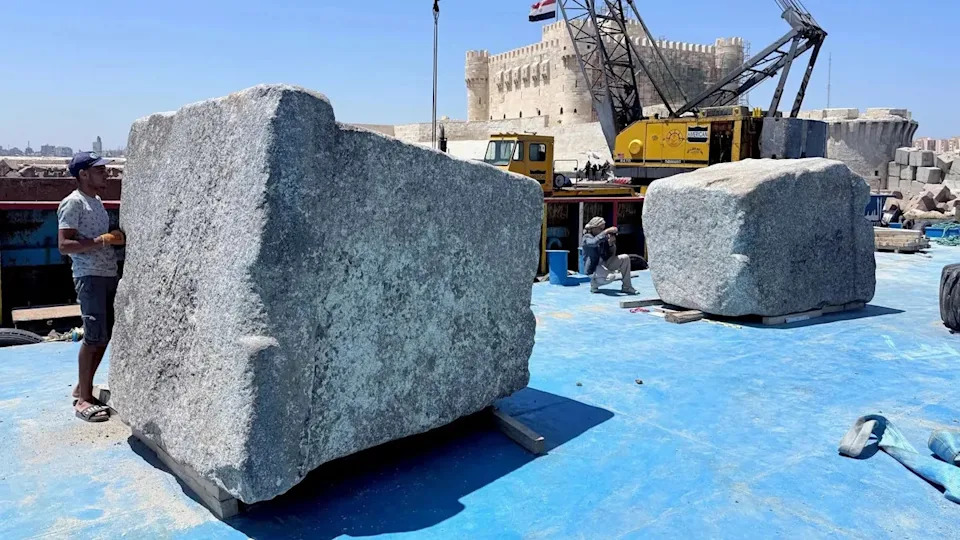Nearly two dozen large stone blocks used thousands of years ago to build the famous lighthouse in the Egyptian port city of Alexandria have been unearthed from the Mediterranean Sea, according to a statement from the Dassault Systèmes Foundation.
Marine archaeologists have hauled 22 of the gigantic stones from the bottom of Alexandria’s harbor. The stones will now be studied and digitally scanned so that researchers might build a 3D model of the Lighthouse of Alexandria as it stood when it collapsed as a result of earthquakes in the 14th century.
The ancient lighthouse was first erected around 280 B.C. as a beacon to help ships come safely into harbor. At 328 feet high, it was one of the tallest structures in ancient civilization and is considered to be one of the “wonders of the world.” The light within was produced by a large fire, which was provided by either coal or oil, and it was then reflected off of surfaces of polished metal.

GEDEON Programmes/CEAlex
This latest project is the third such excavation at the site after remains of the lighthouse were first discovered in 1994. With the latest find, researchers are now working on building a “digital twin” based on what they’ve culled from evidence and other archaeological records. After the stones are scanned, volunteers will attempt to correctly orient them "like pieces of a giant archaeological puzzle," according to the statement. Researchers hope that the prospective model will "revive the lighthouse's original grandeur, allowing visitors to explore it as if they were on site.”
Archaeologists Recover Stunning Remnants of World Wonder first appeared on Men's Journal on Jul 9, 2025














